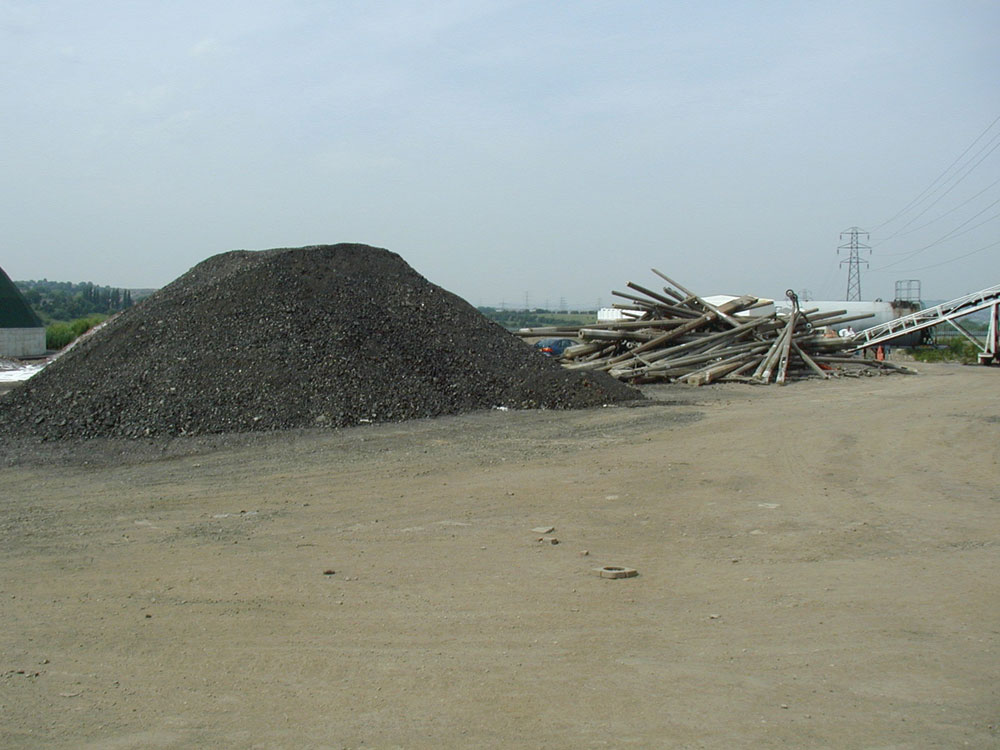Cold-Mix Recycling In The UK

Increasing pressure from legislation and ‘environmental reputation’ is causing local government to look increasingly closely at environmentally friendly options for pavement construction and maintenance. One such example that has developed into a significant success story has been the liaison between Barnsley MBC and SteelPhalt (part of the MultiServ Group) at Rotherham, whose joint vision has seen the development and progression of ‘ColdBit’.
An opportunity for recycling occurred with the production of substantial levels of demolition waste, fundamentally a blend of concrete from building demolition, lamp posts, bricks, utility arisings etc. Around 4,000 tonnes of such materials are presented annually.
In order to facilitate a fully environmentally attractive option, SteelPhalt worked with Total Bitumen at Preston to develop a cold-recycling process (ColdBit) for use in base materials for low-category applications.
The scope of the project was to produce, using a cold process, a 20mm dense base material that could be stockpiled for a minimum of seven days. The resulting material, when applied, must develop the strength to exceed the prerequisite stiffness laid down in the former HAUC requirements, ie 900MPa after 24 months.
The problem was significant, in that the feedstock was far from chemically consistent, although the production of a relatively consistent grading was believed to be achievable.
The challenges
The initial challenges set for Total Bitumen meant that the focus was very much on the utilization of an emulsion that could cope with the highly reactive surface of the cementitious aggregates.
Breaking of an emulsion is far from simplistic and depends on a number of factors working together in order to establish the optimum stabilization characteristics. Some of these factors are discussed below.
The structure of an emulsion is essentially a micro-dispersion of bituminous globules within a continuous aqueous phase. These globules of bitumen are held stable in dispersion by a coating or layer of charged emulsifier. The emulsifier is a bi-functional molecule, with one portion of the molecule being lipophilic (ie attracted to the oily characteristics of the bitumen) and one portion being hydrophilic (ie attracted to the ‘polar’ water phase but repelled from the oily bitumen).
Therefore, while Van der Waals forces attract the particles, one to another, there is electrical repulsion repelling the particles and so the emulsion remains stable. However, as soon as the attractive forces outweigh the repulsive forces, the conditions for ‘break’ begin to be created.
There are two forces of attraction that stimulate the initiation of break; first, the attraction of the bituminous particles one to another, and secondly, the attraction between the aggregate surface and the bituminous particles.
The interaction between an acidic (cationic) emulsion and basic aggregate surface often leads to localized premature break of the emulsion in the vicinity of the aggregate surface and a ‘sudden’ increase in the surface tension of the bituminous droplets. This makes adhesion to, and coating of, the aggregate very difficult to achieve effectively. Furthermore, such a forced breaking of the emulsion leads to a reshaping of the bituminous droplets upon coalescence and inevitable pulling away from the aggregate surface, therefore impeding adhesion.
In addition, the degree and nature of ‘break’ will also significantly influence the level of workability in the mixed system. A fully broken system immediately starts to develop matrix cohesion and workability begins to be reduced – a negative characteristic when a minimum seven-day workability is specified.
To further complicate the issue, the nature of the aggregate was known to be variable, as the recycled material may contain greater or lesser amounts of asphalt arisings, bricks or cementitious materials. A single-formulation emulsion was the only possibility logistically, so the formulation had to be able to tolerate a wide range of chemical reactivities.
The development
Initial work included single emulsion systems, which focused on either: very stable emulsion systems in which the emulsion was dispersed through the system and remained as emulsion (albeit thickening in the locale of the aggregate interface) until the point of compaction; or emulsion which ‘broke’, or substantially broke, at the point of mixing, relying on the water to lubricate the system. Both approaches had significant problems and produced materials that were overly sensitive to on-site variations, such as slumping in stockpiles creating clagging, rain creating wash-off etc.
Later work essentially combined the positive aspects of these systems and reduced the negatives by combining the technologies and so the product Emulsis MG was developed. Using an innovative production mechanism, the chosen emulsion blends combinations of different surfactant characteristics and different residual bitumen characteristics to produce a finished emulsion that creates a degree of initial break at the point of mixing, around the aggregate, yet retains some emulsified characteristics. This results in a cold basecourse that can be stockpiled for periods of up to six weeks and retains excellent workability, yet on compaction begins to generate stiffness immediately.
Assessment of a site in Yorkshire illustrates the rapid stiffness development of the ColdBit material in situ (fig. 1) and shows how the impact of compaction really initiates the strength development.
SteelPhalt and Total Bitumen have continued to work in close partnership to develop and control an effective mix design. This design allows tolerance to variations in the chemical reactivities of the secondary aggregate surfaces, with control at the mixing plant being fundamental. Overdosing of the Emulsis MG, or variation of the aggregate grading, can alter the binder richness modulus (level of cover of bitumen around the aggregate) beyond a threshold level, thereby causing clagging or lack of cohesion, so plant and mix control are essential elements in successful cold-mix recycling.
Current status
SteelPhalt are producing in excess of 4,000 tonnes of 100% cold-recycled basecourse each year. Indeed, it is the availability of the feed source that has often proved the limiting factor. Recently, SteelPhalt have taken their product into new areas with very positive feedback from the client regarding the performance of the material.
The author, Allan Grossart, is market development manager with Total Bitumen UK
